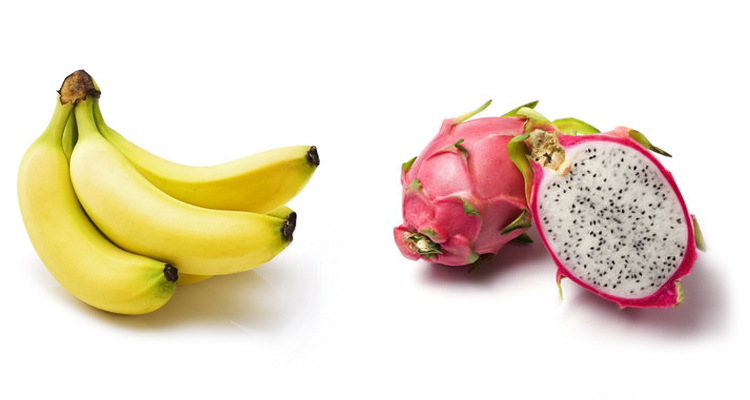Are you a Dragon Fruit or a Banana?
I’ve been grocery shopping weekly for over 20 years, and every week I’ve bought bananas. I’ve bought bananas over 1,000 times in my life; it’s crazy to think about! I really know how to buy a banana. I know how my family likes them, I know how long a banana will need to ripen depending on the shade of green and I know how to eat a banana. In the world of banana acquisition and consumption, I’m a de-facto expert.
One day at the grocery store, my daughter and I saw a dragon fruit. It looked so cool: pink, oblong-shaped and sort of soft and spiky (all at the same time). We were sold — but we didn’t leave the grocery store with a dragon fruit that day.
So what happened? What was the problem? As cool as the dragon fruit was, we didn’t know how to pick a dragon fruit. What color is it supposed to be? How do you know if it’s ripe? Do you squeeze it? Smell it? Shake it? How do you eat it? Do you peel it, slice it or cook it? After admiring the dragon fruit for a little while, we put it down and continued along. We didn’t buy the dragon fruit — think about that for a second. Though we wanted to buy it, we stood around and looked at it, only to put it down and continued toward the bananas.
That’s precisely the problem most of our customers have with just about every kind of AV system we sell them. Our customers buy AV relatively infrequently; we’re the dragon fruit of their weekly trip to the supermarket.
So, what does someone who needs an AV system but doesn’t know how to buy one do? Sometimes they pretend, feigning knowledge and confidence to make us believe they’ve bought thousands of AV systems. Sometimes they hire an exotic fruit specialist (a consultant in the AV world) to guide them through the process of buying and consuming the dragon fruit. Sometimes they use a poor proxy for decision criteria, the “I’ve bought a banana so I must know how to buy a plantain” people. Because of a lack of knowledge and understanding on how to buy the dragon fruit, they go out to market with vague requirements and end up buying the least expensive option presented. In the absence of understanding, price often becomes the metric by which our customers regain the perception of control.
Our customers don’t know how to buy the stuff we’re selling. What they really need is someone to tell them, in an unbiased manner, how exactly to buy an AV system: What to look for, what questions to ask, what the trade-offs are (i.e., projection vs. flat panels) and much more. They need guidance.
What could the grocery store have done on that fateful dragon fruit day? Looking back, it wouldn’t have taken much. My distance between prospect and consumer wasn’t far. What I needed was a feeling of confidence — perhaps a poster right beside the display that outlined how to pick, peel and eat a dragon fruit. That’s all it would have taken to close the prospect-consumer gap for me.
Now, if the dragon fruit was $100 instead of $5 (high commitment vs. low commitment), the effort needed to help close the gap between prospect and consumer gets wider. For $100 I would have needed to see a live person besides the display giving a live how-to. I’d want to see them cutting up dragon fruits, giving me a sample and answering my challenging questions. The lesson here is: Scale the level of guidance to the level of commitment (monetary and emotionally) of the AV system(s) your customer needs. The prospect-to-consumer gap isn’t that big if you keep low commitment versus high commitment in mind.
To be more successful, we need to help guide our customers. We need to help them feel comfortable and confident. We need to help them understand the right questions to ask. We need to help them understand the trade-offs between time, performance and cost.
Then there’s the next debate: Is it better to be the banana or the dragon fruit of your customer’s day? I’d much prefer to be the dragon fruit … a customer who’s bought what I’m selling 1,000 times doesn’t leave me many places to add value and expertise. But that is up to you.




